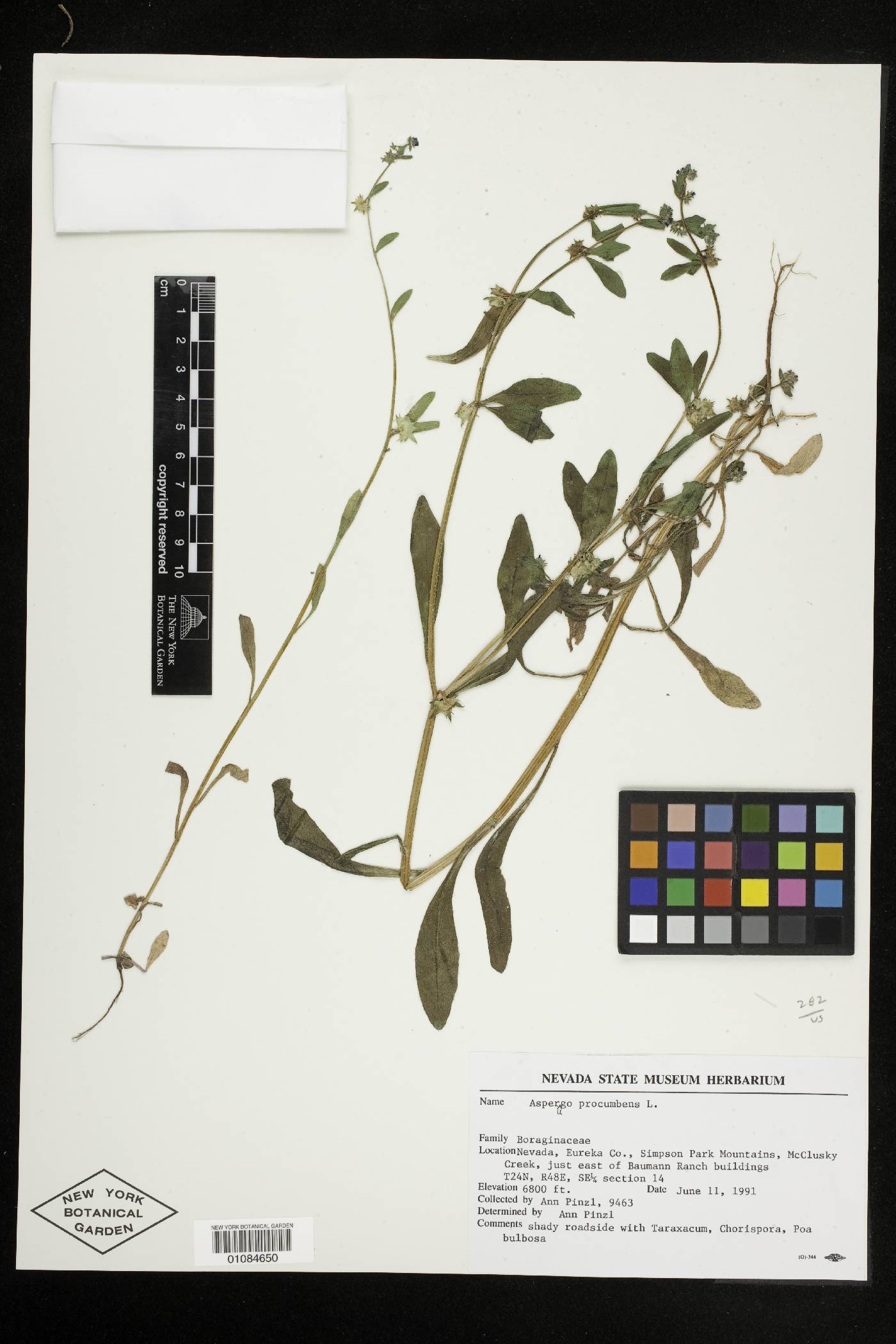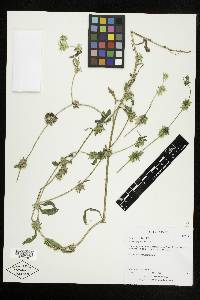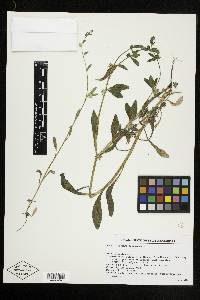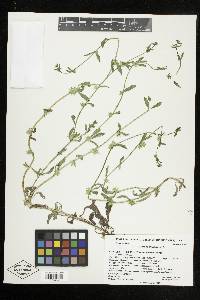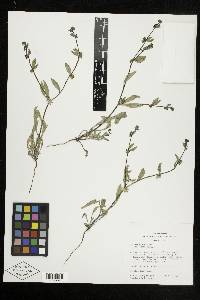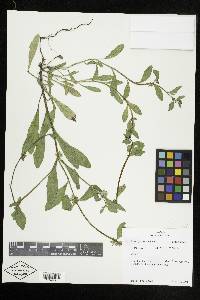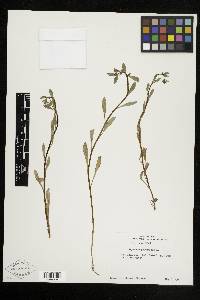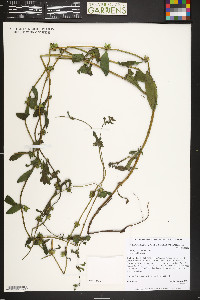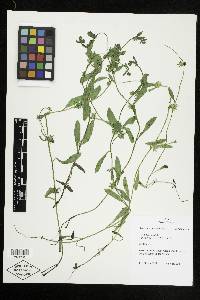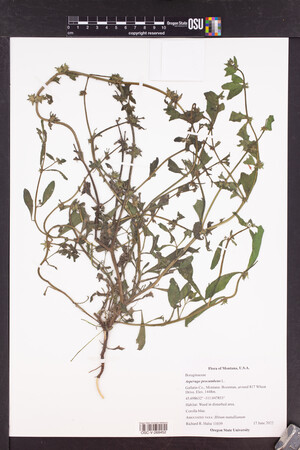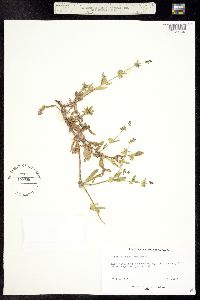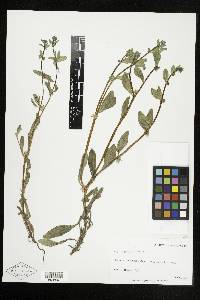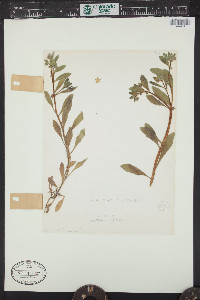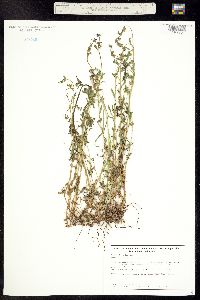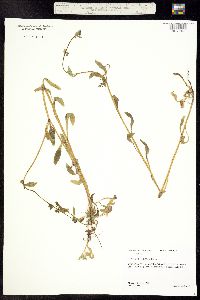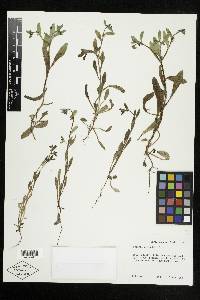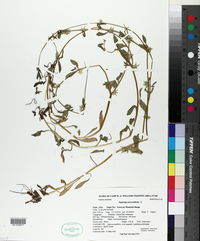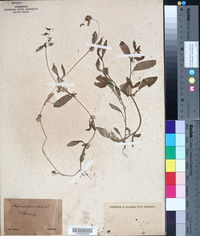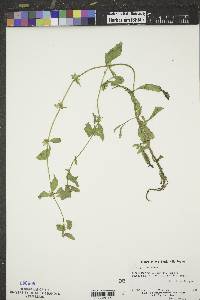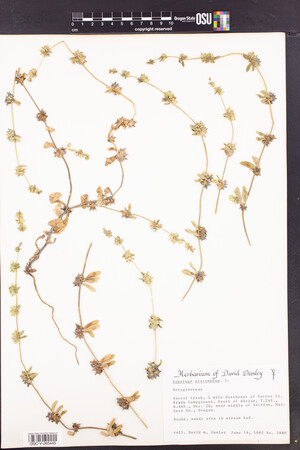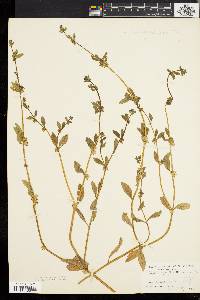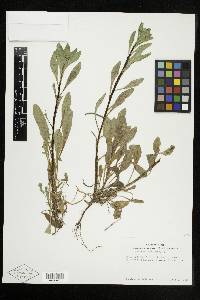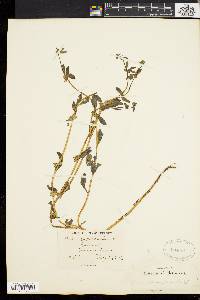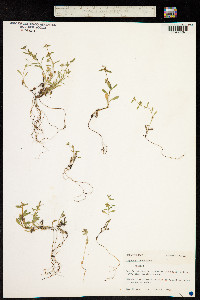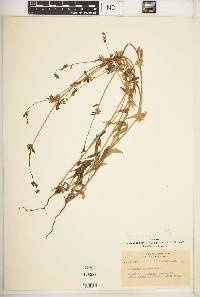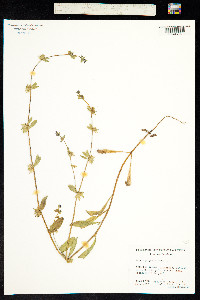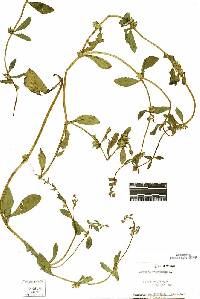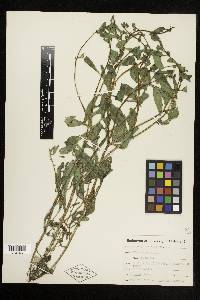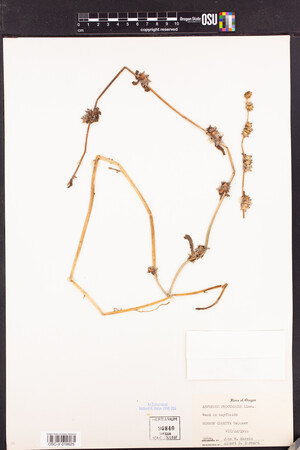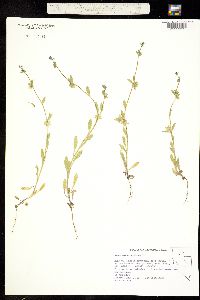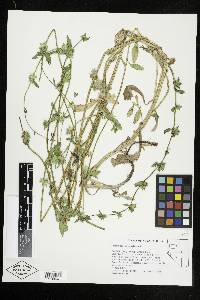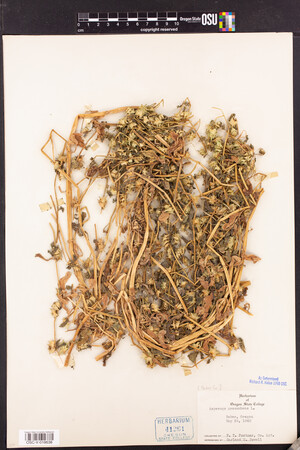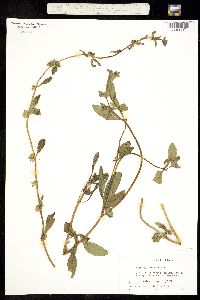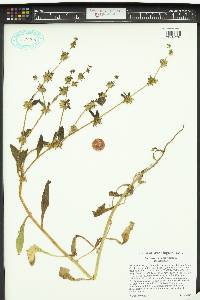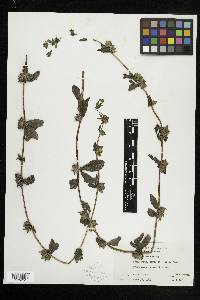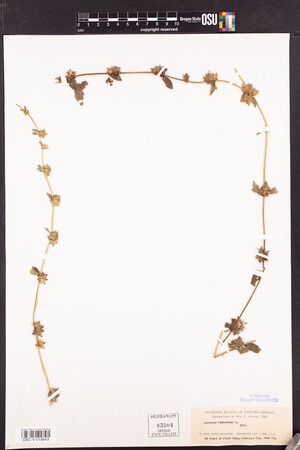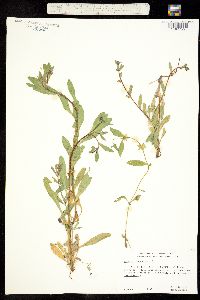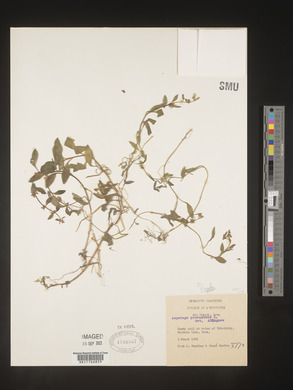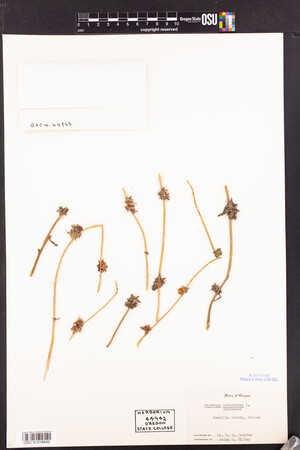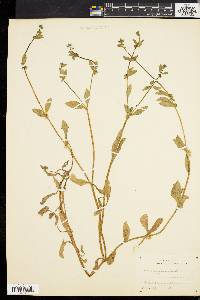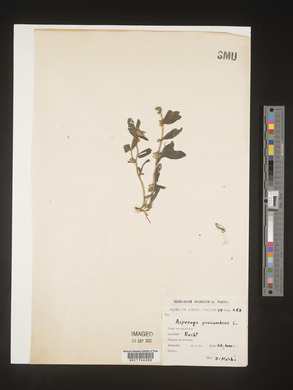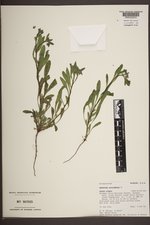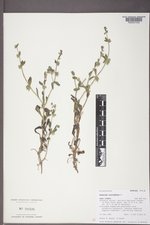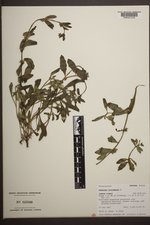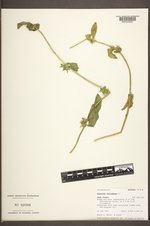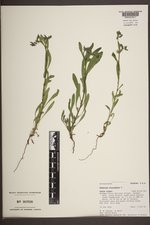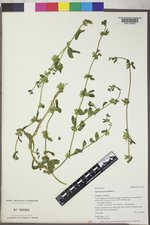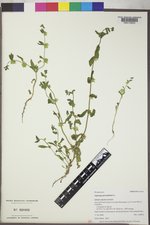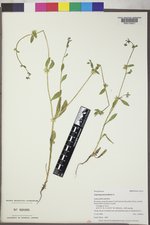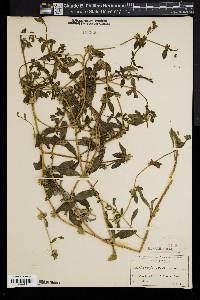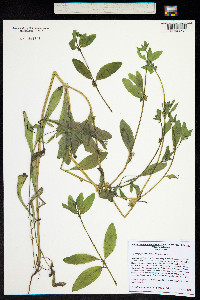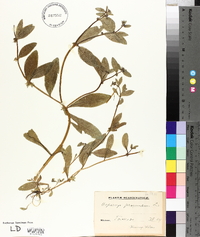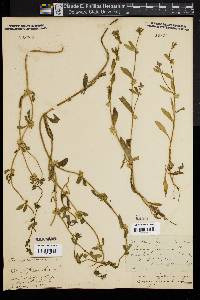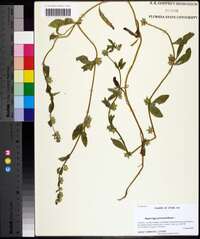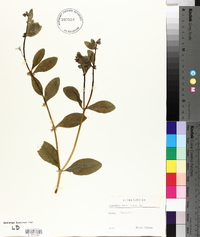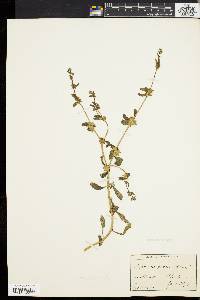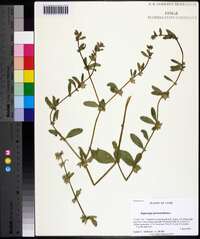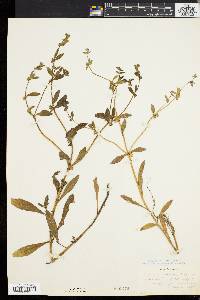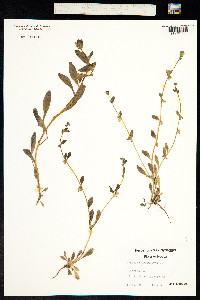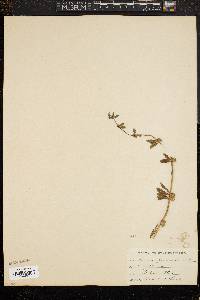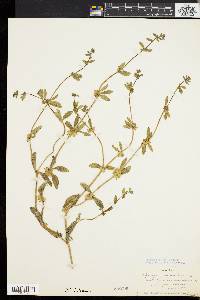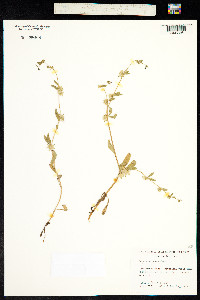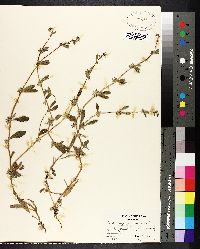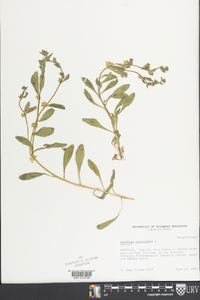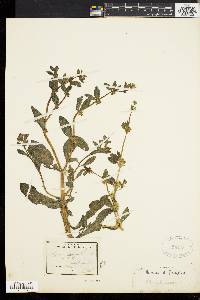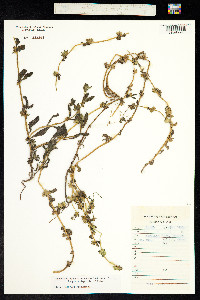Asperugo procumbens
|
|
|
|
Family: Boraginaceae
German-Madwort
|
Annual herb 30 cm - 1 m tall Stem: low, scrambling or climbing, weak, but freely branched, and covered with coarse, short, reflexed hairs. Leaves: opposite to partly alternate or sometimes whorled, possibly with very tiny and inconspicuous teeth, prickly-hairy, 3 - 8 cm long, inversely lance-shaped with upper leaves sometimes more elliptic. Flowers: blue, small (2 - 3 mm tall, 2 - 3 mm wide), radially symmetric, somewhat bell-shaped with horizontally flared lobes, and arranged singly on short, stout, recurved stalks in the axils of leaves or bracts. Sepals: five, but fused at base (up to half their length), then separating into five, narrowly triangular to lance-shaped, pointed tipped lobes, each with a small, basal tooth on both sides. The sepals are covered with a mixture of short, prickly, spreading hairs and curved or hooked hairs. Entire structure (tube and lobes) becoming firm, strongly veined, jagged toothed, and greatly enlarged in fruit. Petals: blue, five, but fused for just over half their length into a short tube, then separating into wide, rounded, flaring lobes, each with well-developed but small appendages (fornices) near their base. Stamens: five, attached to inside of petal tube, and not exceeding the tube in length. Pistil: with one, four-lobed, superior ovary; a single style; and a single stigma, which does not extend beyond the petal tube. Fruit: a cluster of four, narrowly egg-shaped nutlets compressed on an angle and surrounded by the much enlarged (1 - 2 cm wide), sharply toothed, veiny, short prickly-hairy, wing-like sepals. Similar species: The only species in this genus (monotypic), Asperugo procumbens is very different from most of our other members in the Boraginaceae family since it is a weak-stemmed climber and the flowers are located in the axils of leaves and large leaf-like bracts. Further, the fruit with the enlarged, toothed, wing-like sepals surrounding the nutlets is a unique character in the family, but is very similar to what is seen in the genus Atriplex in the Chenopodiaceae family, especially in A. rosea. Atriplex species can be easily distinguished from Asperugo because they have much smaller, inconspicuous, green flowers that are either all female or all male, the ovary is not lobed, there are two styles, the plants are normally not covered with hooked hairs, and the leaves usually have some obvious teeth or pointed lobes. Flowering: May to August Habitat and ecology: Native to Eurasia, a very rare weed only collected twice in 1973 along a railroad in sandy soil. Occurence in the Chicago region: non-native Author: The Field Museum Stems 3-12 dm, freely branched; lvs oblanceolate, 3-6(-10) cm, or the upper more elliptic; cor 2-3 mm long and wide; fruiting cal 1-2 cm wide; 2n=48. Native of Eurasia, occasionally found in waste places in our range, especially northward. May-Aug. Gleason, Henry A. & Cronquist, Arthur J. 1991. Manual of vascular plants of northeastern United States and adjacent Canada. lxxv + 910 pp. ©The New York Botanical Garden. All rights reserved. Used by permission. |

